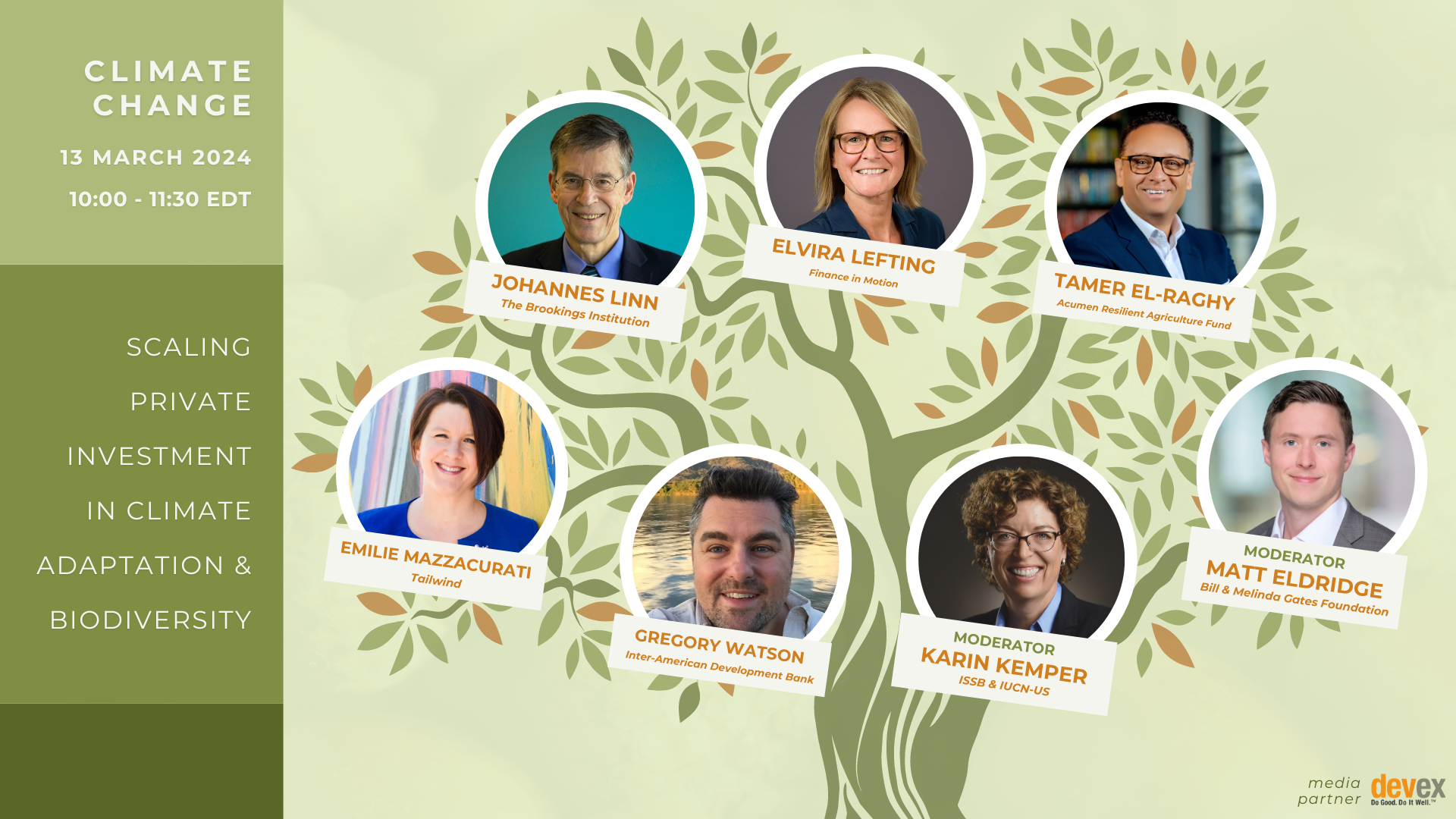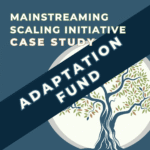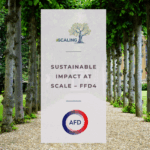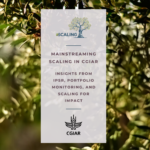
Description
Johannes Linn introduced the session and the new co-chairs of the Climate Change Working Group, Matt Eldridge and Karin Kemper. Matt highlighted the purpose of the session: bringing together practitioners in the fields of climate and nature investing to highlight practical approaches to scaling private investments in these areas.
Emilie Mazzacurati began the discussion by speaking about private investment opportunities in adaptation as well as policy barriers and the need for definitions. Gregory Watson highlighted the massive gaps in finance for both biodiversity and climate adaptation and explained how blended finance can help scale both nature investments and climate adaptation, providing examples of recent debt for nature conversions catalyzed by the Inter-American Development Bank (IDB) in Ecuador and Belize. Tamer El-Raghy focused on the challenges and opportunities to provide affordable funding to small farmers in Africa for sustainable agriculture, including the need for local currency lending. Elvira Lefting emphasized the role of impact investors in scaling investment, noting rising interest in asset class, and highlighting the importance of data for investors.
Highlights and take-aways from the ensuing discussion included achievements in the climate adaptation and nature spaces so far, as well as recommendations on how to drive scaling more effectively and faster.
Speakers highlighted the following achievements and positive trends:
- Scaling in climate adaptation and nature is accelerating. Investments in nature also tend to have positive climate adaptation effects.
- The private sector is no monolith – it encompasses multiple players ranging from private companies investing in climate adaptation and biodiversity activities to financiers in capital markets, high net worth individuals, private foundations, and development banks. These players see the opportunities in adaptation and/or nature investing. For instance, Finance in Motion has crowded private investors into emerging markets to the tune of about USD1 billion a year.
- The IDB’s debt to nature conversions have saved participating countries USD1 billion.
- Investments in agriculture in Africa can be profitable and scaling is possible with the right incentives, helping farmers buy down otherwise prohibitive borrowing costs and providing appropriate technical assistance.
- Climate risk used to be ignored. Now an established toolbox exists to assess risk.
On the question of what it takes to go to scale and make investments successful, panelists made the following points and recommendations:
- It is key to understand potential investors’ strategies and needs, and to build opportunities around them to make climate adaptation and nature investments attractive.
- Investors like clear and simple – this is a big enabler for scale.
- To crowd in private investment, sustainability of the business model is essential. Investments need to be financially successful to attract private money.
- Focus not only on international capital but also on attracting investors from the global south and domestic capital.
- Continue efforts to build an asset class that helps aggregate investments and replicability.
- In agriculture in Africa, funds invest in early-stage companies focusing on smaller farmers. Since borrowing costs are unaffordable, funding the funds is necessary so they can invest in farmers and include more efficient and effective technical assistance.
- Further expand financial and insurance solutions to attract investments and enable scaling.
- There is a need to solve the problem of the emerging markets premium, especially in the case of nature; asset managers and family firms are interested and could provide support.
- People need to have an open mind about leveraging indigenous knowledge, local communities, and novel products.
- Be local and context-specific but enhance investment scalability by developing a list of activities that support adaptation as well as investments that might support adaptation.
- One of the problems in adaptation is that there is no clear path like in mitigation.
- Risk and uncertainty can be addressed by improved data – which should be a public good – and de-risking through blended finance as needed. Make data available freely so that all classes of investors have access, not only the very large ones, and have a better understanding of true risk, not just perceived risk.
- Use the risk assessment tools that have been developed in recent years.
- Risk from nature loss needs to be more proactively considered. Dependency on nature is still not well understood and integrated into decision making process. To assess ‘dependency risk’ apply the Taskforce on Nature-related Financial Disclosures (TNFD) approach.
Key Session Takeaways:
- Scaling in private sector investment in climate adaptation and nature is happening – it’s an underappreciated paradigm shift and we have tools to deploy.
- Private investors consider sustainability and scalability of target investment/organization as a matter of standard practice.
- Provide (dis)incentives to change behavior; consider subsidies, good and bad ones.
|
|
|
|
|
|










